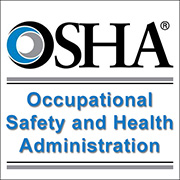Comply with New OSHA Reporting Rules
Is your Business ready to Comply with New OSHA Reporting Rules?
New rules from the Occupational Safety and Health Administration have expanded the agency’s reach for reporting requirements. Among other changes, more industries will now have to keep and post logs of employee illness and injuries. February 1,2015 is the posting deadline for those already covered before the new rules kicked in on January 1,2015. Will your company be affected? Is your Business ready to comply with New OSHA Reporting Rules? Here’s what you need to know.
Occupational Safety and Health Administration (OSHA) rules for reporting worker injuries apply primarily to employers considered to have hazardous work environments. However, in the tragic event of an on-the-job work-related fatality — 4,405 of which occurred in 2013 — all employers with at least three employees must report that occurrence to OSHA within eight hours. That has always been the case.

Here is the information employers in all industries need to give OSHA when reporting any of the four serious events:
1. The name of your business
2. The location of the work-related incident
3. When the incident occurred
4. The type of reportable event
5. The number and names of all employees involved
6. Your contact person and his or her phone number
7. And a brief description of the incident.
Covered or Not?
A list of newly covered industries can be found on the OSHA website here, and also a list of industries which are now exempt.
New regulations issued last September have just become effective, requiring that all employers must also report to OSHA within 24 hours when any of the following three work-related events occurs:
•Inpatient hospitalization of one or more employees,
•Amputations, and
•Loss of an eye.
You can communicate the information to OSHA by calling a regional OSHA office, or a 24-hour OSHA hotline (800-321-6742) or by filling out a form on the OSHA.gov website.
A work-related death might not be instantaneous, of course. If an employee’s work-related death occurs within 30 days of the incident, you still need to contact OSHA. And of course, the underlying cause of the accident must be recorded at the time it occurred.
Is it Really Work-Related?
Also, it is not always clear whether certain causes of death or in-patient hospitalization, such as a heart attack, are really linked to the job or not. According to OSHA, “If the heart attack is related to a work-related incident, you must report [it]” and the local OSHA official will decide whether to investigate the matter to decide whether there was a connection.
What happens if you don’t hear about the death, inpatient hospitalization or loss of a limb or eye right away? Are you still subject to the eight/24-hour reporting deadline? OSHA says in this situation, the clock starts ticking not from the time of the incident itself, but from the time you “or any of your agent(s)” learn about it and determine that it is work-related. Presumably in the case of a death, that wouldn’t take long.
The new rules also expanded by 25 the number of industry sectors now covered by ongoing reporting requirements applicable to employers with more than 10 employees. Those requirements include maintaining a log and posting the summary annually. The expansion is the result of OSHA switching to a new organization (the North American Industry Classification System) to classify employers as hazardous or not. Specifically, only employers having less than 11 employees, or those in industries deemed to be “low hazard” are exempt from the reporting rule.
Newly Covered Industries
Newly covered industries include bakeries, automobile dealers, building material and supplies dealers, “activities related to real estate,” facilities support services, individual and family services, among others. (See the sidebar bottom for a link to specific industries which are newly covered, as well as a link to industries which were previously covered by the reporting requirements, but now are exempt.)
The OSHA forms covered employers must use are:
•Form 300: The Log of Work-Related Injuries and Illnesses. This form requires just a superficial description of incidents, and is used to calculate numbers for Form 300A.
•Form 300A: Summary of Work-Related Injuries and Illnesses during the prior calendar year. This form lists the total number of deaths, days away from work, and cases in which an injured employee had to move to a new job or have duties restricted as a result of the incident. The form also requires enumeration of the categories of injury or illness. It must be posted prominently at each work location by February 1 through April 30 — even if you had no reportable events during the period covered by the report. Copies should be supplied to employees whose jobs are such that they would probably not be able to see the posted version.
•Form 301: Injury and Illness Incident Report. This form requires not only basic data about the employee, but descriptions of what the employee was doing at the time of the incident, the event itself and nature of the injury or illness, and a description of any object (for example, a tool) or substance involved.
To be reportable, work-related injuries and illnesses must result in death, loss of consciousness, days away from work, restricted work activity or job transfer or “medical treatment beyond first aid.” Instructions for the forms address the nuances.
Because the forms contain information about employee health, forms 300 and 301 must be “used in a manner that protects the confidentiality of employees,” according to OSHA.
If you need help to Comply with New OSHA Reporting Rules, reach out to Vision HR and explore working with that company to meet your OSHA reporting needs.



